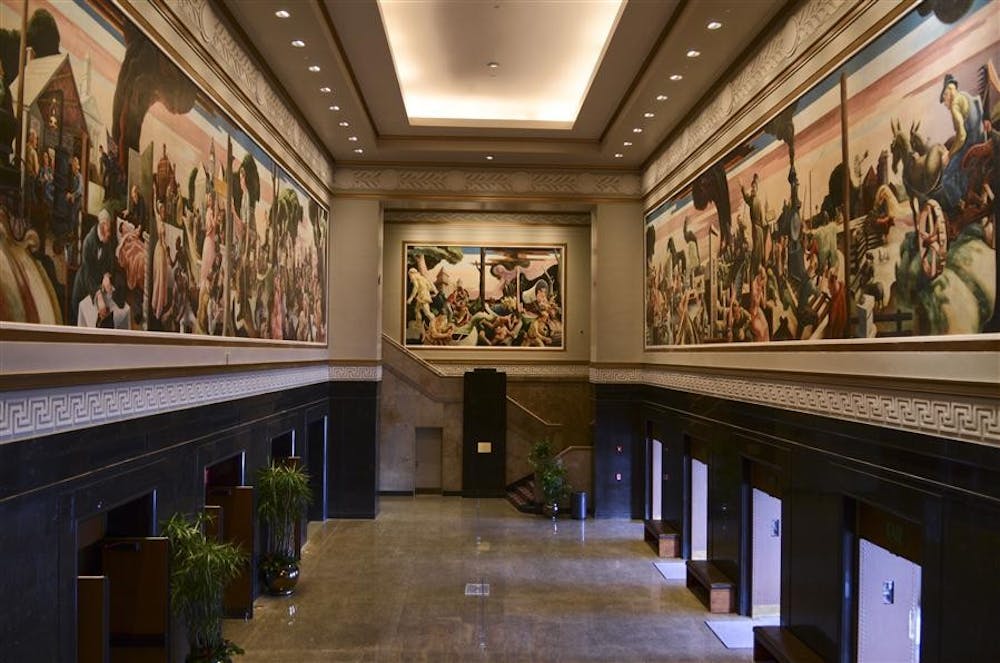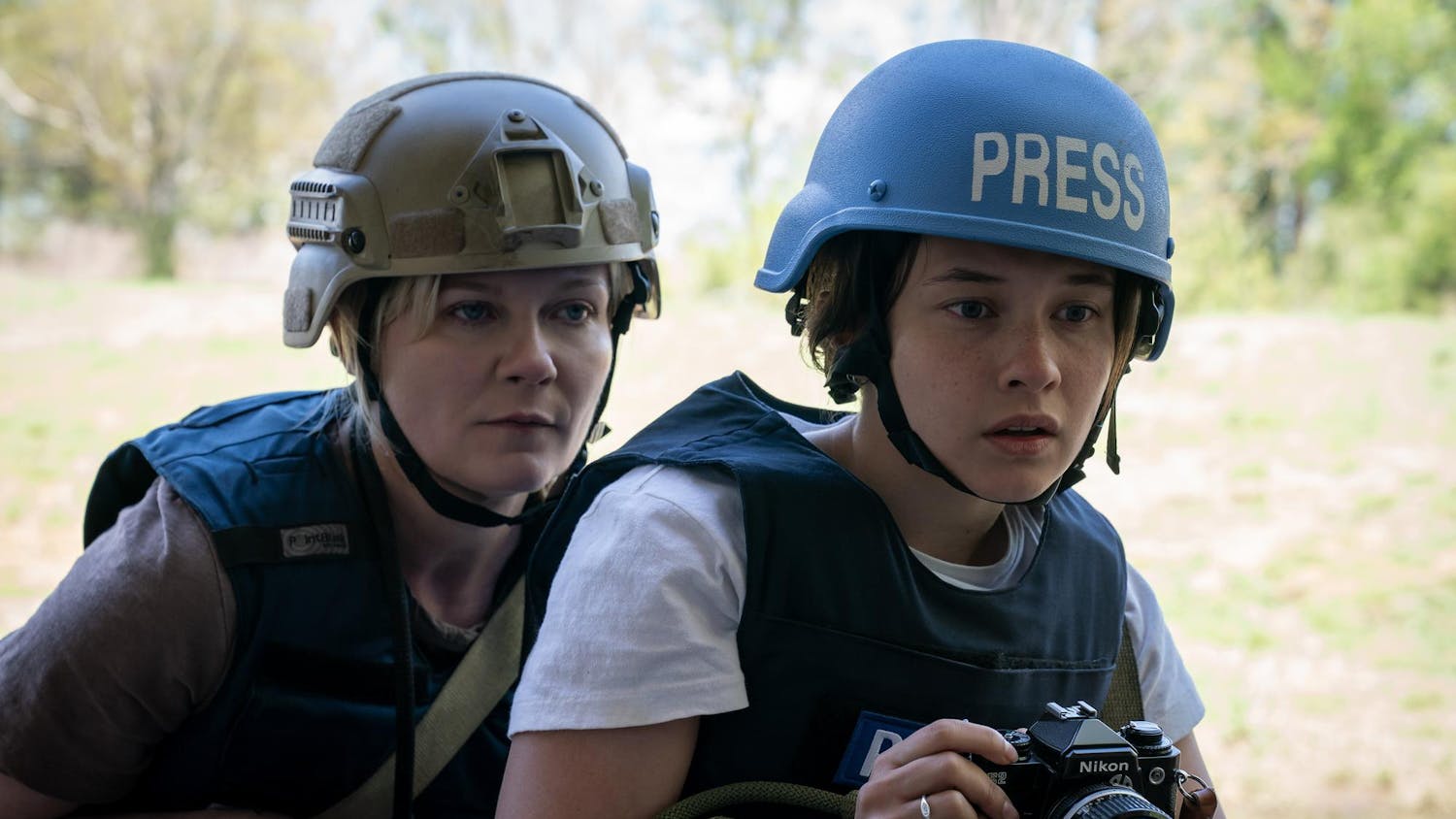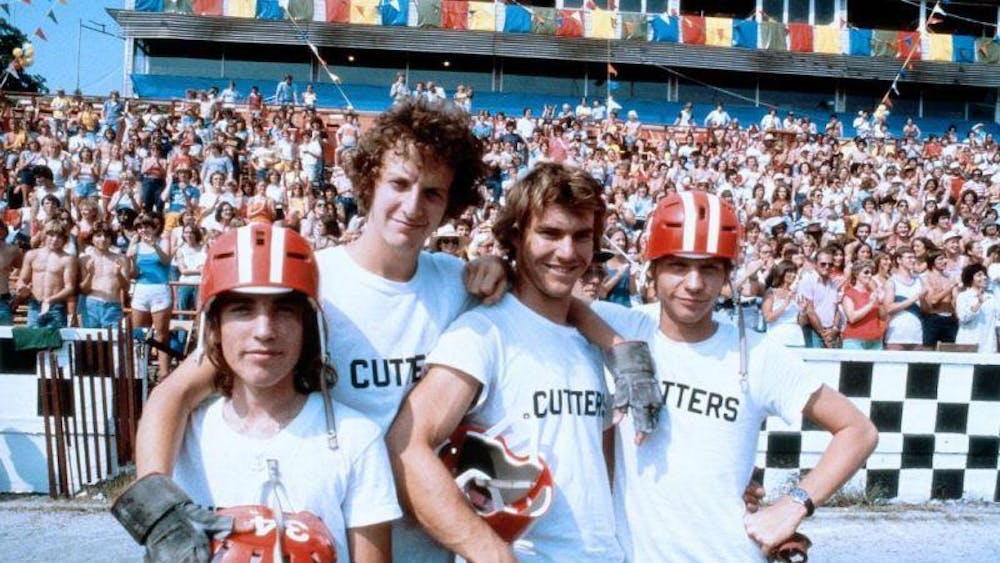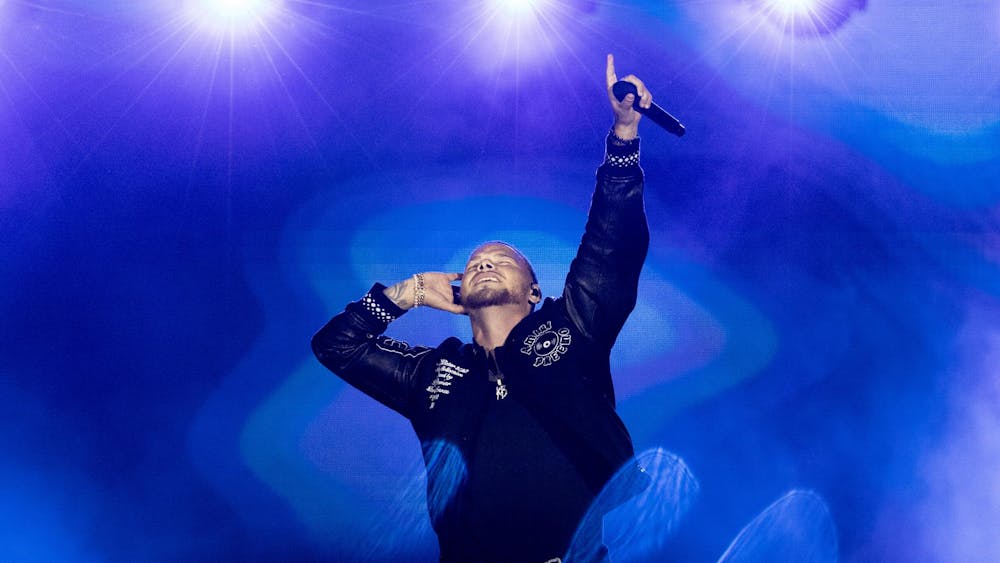IU’s Commission on Multicultural Understanding mounted artist Thomas Hart Benton’s famous Indiana Murals last week outside of Woodburn Hall 100 with the hopes of educating and sparking the interests of students, faculty and campus
visitors.
The 22 murals on display are accompanied by descriptions of the history behind Benton’s work, the murals’ tie to IU and a description of one of the controversial panels.
Benton was asked to paint the large murals in 1932 for the Century of Progress Exposition in Chicago. He was asked to illustrate Indiana’s history of culture and industrial transformation. In six short months, Benton, an expert on American history, constructed the 22 murals to symbolize Indiana’s role in American history.
Benton received national recognition, including an appearance on the cover of Time magazine in 1934.
After the Exposition closed, Herman B Wells was able to convince then Gov. M. Clifford Townsend to dedicate the murals to IU’s auditorium. Although the canvas had to be slightly altered to fit the auditorium, the murals found their new permanent home in the Auditorium and IU Cinema.
“The murals provide an invaluable opportunity for renewed dialogue about our collective past and its relevance to issues in the present and future,” said Karen Hanson, provost and executive vice president. “They remind us of the University’s deep connections with the history and culture of the state. They will help students understand the murals and their complex and important legacy.”
One of Benton’s panels, titled “Parks, the Circus, the Klan, the Press” has been considered controversial for its content depicting the Ku Klux Klan burning a cross.
When state officials were allegedly unhappy with Benton’s depiction of Indiana’s ties to the KKK, Benton was able to convince them that his work was an honest representation of the state’s history. Although it is controversial, Benton used the philosophy that to move forward, we must learn from the past.
Particularly because the images of the Klan can be offensive and disturbing, the Commission of Multicultural Understanding took caution in approving the
display.
“We understand that this image can evoke painful feelings for some students. Through much discussion and reflection over the years, our campus has consistently concluded that education is the best response to the controversy — that students gain the most if they are well informed about the murals and why we value them,” said Pamela Freeman, associate dean of students and director of the Office of Student Ethics and Anti Harassment Programs.
A number of students who observed the murals feel that although the Klan can be seen as an offensive representation of Indiana’s history, it is still a part of Indiana and should be included in the murals.
Hilary Kahn, associate director of the Center for the Study of Global Change, said she hopes the murals will inspire students to engage in conversation and get the information necessary to understand the meaning behind the murals.
Benton mural display shares history

Get stories like this in your inbox
Subscribe





